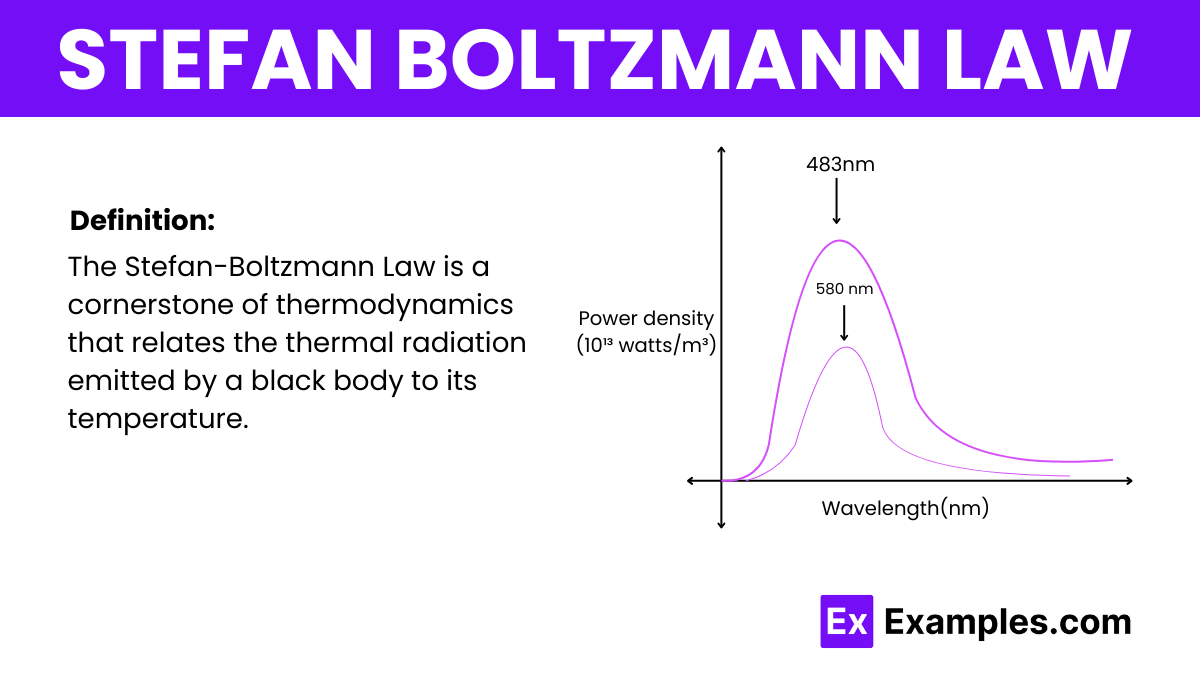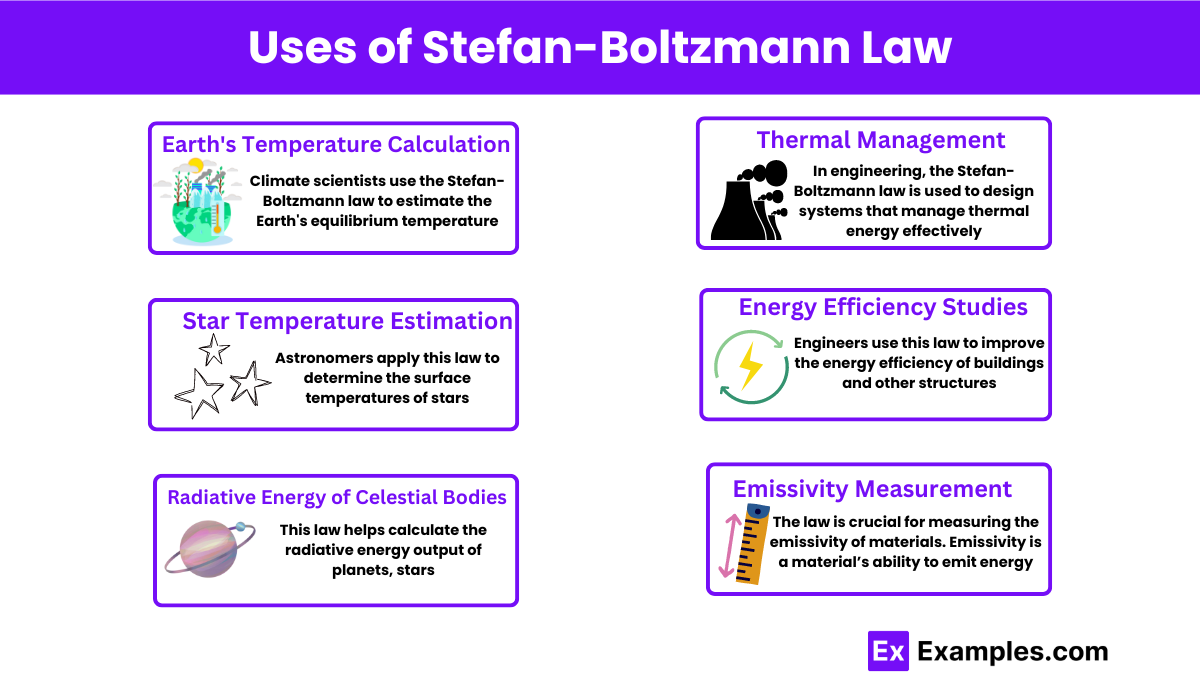How is the Stefan-Boltzmann Law modified for a real object with emissivity less than 1?
P = σT⁴
P = εσT⁴
P = σAT⁴
P = εσAT⁴

The Stefan-Boltzmann Law, often referred to as Stefan’s Law, is a crucial principle in the Laws of Thermodynamics and physics, detailing how the power radiated from a black body relates to its temperature. Specifically, this law articulates that the total energy emitted per unit surface area of a black body across all wavelengths per unit time (j*) is directly proportional to the fourth power of the black body’s temperature (T). This relationship is a cornerstone in the Laws of Physics, providing essential insights into the thermal behavior of objects across various scientific fields.
The Stefan-Boltzmann formula is a fundamental equation in the field of thermodynamics and physics, quantifying the amount of energy a black body radiates based on its temperature. The formula is crucial for studies in various scientific areas, including physics, astronomy, and engineering, because it links thermal radiation to temperature using a simple yet powerful relationship.
The Stefan-Boltzmann formula is given by:
To derive the Stefan-Boltzmann Law, we integrate Planck’s radiation formula over all wavelengths. The power radiated per unit area (𝐴) as a function of wavelength (𝜆) is given by:
𝑑𝑃/𝑑𝜆1/𝜆=2𝜋ℎ𝑐²/𝜆⁵ 1/𝑒^ℎ𝑐/𝜆𝑘𝑇−1
where:
After simplifying, the equation becomes:

We then integrate this with respect to wavelength (𝜆) to find the total power:

The power per unit area after separating the constants is:

We solve this by substituting:

This substitution changes the integral into:

which yields:

Substituting back into equation (1) and simplifying, we obtain the Stefan-Boltzmann Law:

where:

is the Stefan-Boltzmann constant. Thus, the total radiated power per unit area of a blackbody is proportional to the fourth power of its temperature.
Here’s the Stefan-Boltzmann constant presented in various unit systems:
| Unit System | Value of σ | Units |
|---|---|---|
| SI | 5.670367×10−85.670367×10−8 | W/(m²K⁴) |
| CGS | 5.6704×1055.6704×105 | erg/(cm² s¹ K⁴) |
| Thermochemistry | 11.7×10811.7×108 | cal/(cm² day K⁴) |
| U.S. Customary Units | 1.714×1091.714×109 | BTU/(ft² hr °R⁴) |

The Stefan-Boltzmann Law, a cornerstone in thermodynamics and astrophysics, has numerous applications across various fields. This law is crucial for understanding the phenomena involving thermal radiation.
The Stefan-Boltzmann law states that the total energy radiated per unit surface area of a black body is proportional to the fourth power of its temperature.
From thermodynamic principles, the Stefan-Boltzmann law deduces that radiation intensity increases dramatically with temperature, emphasizing the strong dependence of thermal radiation on temperature.
To apply the Stefan-Boltzmann law, multiply the Stefan-Boltzmann constant by the temperature to the fourth power, often used to calculate the radiative heat transfer of bodies.
Text prompt
Add Tone
10 Examples of Public speaking
20 Examples of Gas lighting
How is the Stefan-Boltzmann Law modified for a real object with emissivity less than 1?
P = σT⁴
P = εσT⁴
P = σAT⁴
P = εσAT⁴
How does the power radiated by a blackbody change if its temperature is doubled?
It remains the same
It doubles
It increases by a factor of 4
It increases by a factor of 16
What is the emissivity (ε) of a perfect blackbody?
0
0.5
1
2
If a surface has an emissivity of 0.6, how does its radiative power compare to that of a blackbody at the same temperature?
60% less
40% less
40% of the blackbody\'s power
60% of the blackbody\'s power
Which unit is used to measure the power radiated by a blackbody?
Watt
Joule
Kelvin
Newton
What happens to the radiative power of a blackbody if its surface area is halved?
It remains the same
It is halved
It doubles
It becomes zero
What does the term 'blackbody' refer to in the context of the Stefan-Boltzmann Law?
An object that reflects all radiation
An object that absorbs all radiation
An object that transmits all radiation
An object that radiates no energy
What is the effect of increasing the temperature on the wavelength of peak emission of a blackbody?
Increases
Decreases
Remains the same
Becomes zero
How does the power radiated by a blackbody change if its temperature is halved?
It remains the same
It is halved
It decreases by a factor of 4
It decreases by a factor of 16
Which factor does not affect the total power radiated by a blackbody?
Surface area
Emissivity
Temperature
Density
Before you leave, take our quick quiz to enhance your learning!

